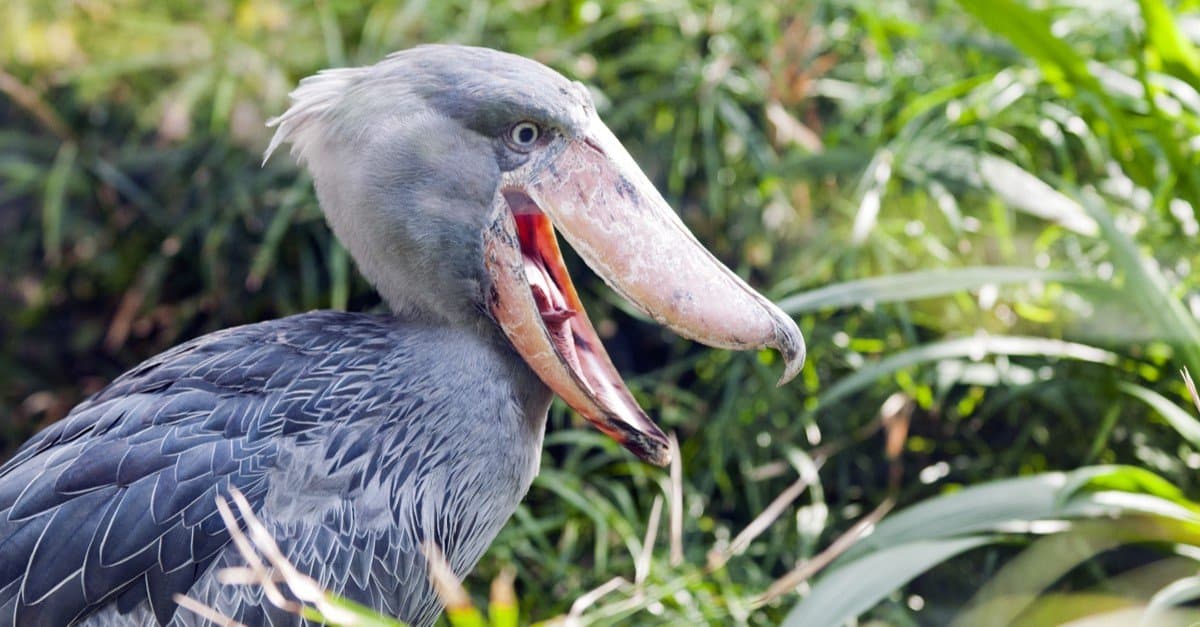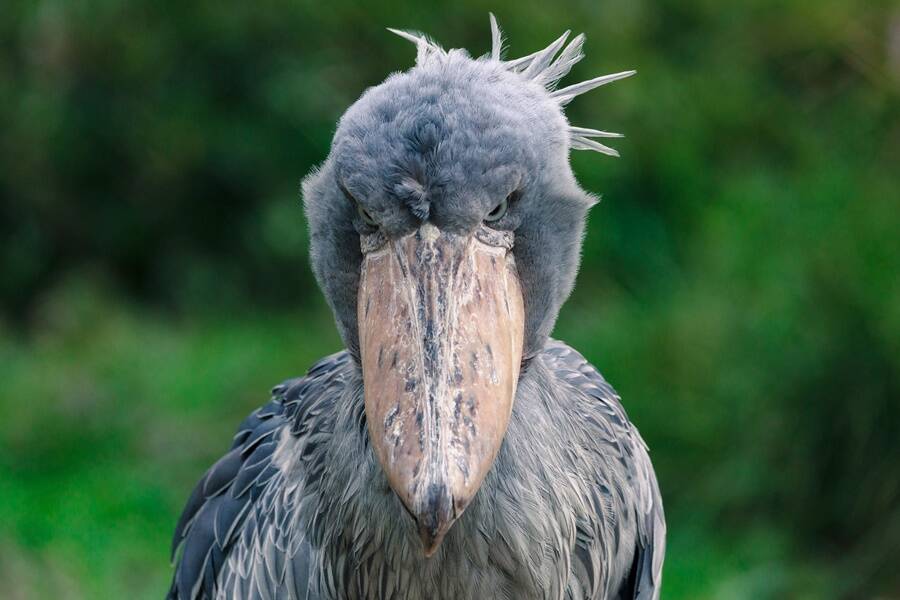

They are excellent fliers, but when hunting they prefer an on the ground approach, patiently stalking their prey – which consists of fish, frogs, snakes, and even small crocodiles – and are known to stand motionless for long periods of time.
Shoebill stork sounds full#
A full grown adult can grow up to 5 feet tall with a wingspan of 8 feet. The Shoebill’s silly name belies its prowess as a hunter. If you think we made this thing up because we were out of ideas, do a quick google search and you’ll see that the Shoebill Stork is not only real, but pretty scary. The unblinking yellow eyes pierce the soul, the dagger-like beak pierces the body, and the machine gun call it makes is just unsettling.

Its eyelids have adapted with tiny holes in them, allowing the Great Potoo to see everything at all times, even with its eyes closed.ĭid we miss any other scary birds? If you want to see these scary species (and some beautiful species too) in person, visit our website to view our birding tours.If Sesame Street was rebooted as a horror movie, the Shoebill Stork would be cast as Big Bird. At night, the Great Potoo’s distinct and unsettling call permeates forests across Central and South America as it hunts for rodents. The Great Potoo is a nocturnal species that spends its days camouflaging itself while perching on tree branches. If a stolen fish isn’t filling enough, the Great Skua will kill and eat other bird species such as puffins and gulls. When hunger hits, skuas don’t hesitate to violently attack other birds and steal their catch. Though they may not look as scary as the others on our list, Great Skuas are equally terrifying for their violent personalities. Reputed as the world’s most dangerous bird, Cassowaries are very difficult to keep in zoos because of frequent attacks on zookeepers. Though from afar the Cassowary may seem harmless, when disturbed by humans it responds by violently attacking with kicking and clawing - often until killing its victim. Southern Cassowary (Casuarius casuarius)įound in the Australian rainforest, Cassowaries are shy and solitary birds that feed on fruit.


The huge wingspan of the Andean Condor allows it to soar for long periods of time without flapping its wings.ĥ.
Shoebill stork sounds skin#
Like most vultures its head and neck are almost featherless, but in addition the Andean Condor’s skin changes color in response to its emotional state. The Andean Condor is a national symbol of Peru, Ecuador, Chile, Argentina, Bolivia, and Colombia. Reports of children being killed by Marabous are not unheard of in its native southern Africa. The Marabou Stork will eat anything it can get its claws into – including human garbage such as shoes – and if harassed will lash out. Like many storks, the Marabou is a scavenger, and it’s strange, featherless head is an adaptation to avoid messy plumage when feeding on animal carcasses. Marabou Stork (Leptoptilos crumeniferus)Ĭapable of growing to a massive 66 inches, the powerful Marabou Stork towers over other bird species. Its strong hooked beak is the ideal tool for ripping into tough carcasses, giving the King Vulture an advantage over other scavengers.ģ. The King Vulture, found from Mexico to Argentina, lives up to its name as king of the scavenger birds. Shoebills can grow up to 55 inches (around 4 ½ feet) tall and use their huge bills to hunt for snacks such as lungfish, snakes, and even baby crocodiles. The Shoebill Stork, also called the Whalehead Stork, is found in East-Central Africa. In the spirit of Halloween, we've compiled a list of the seven creepiest bird species we could find, from species that are vicious and violent to those that are just plain scary to look at.


 0 kommentar(er)
0 kommentar(er)
